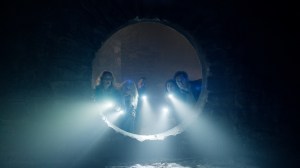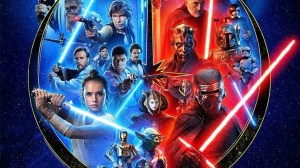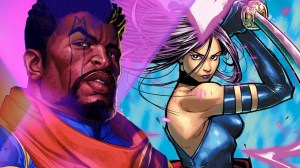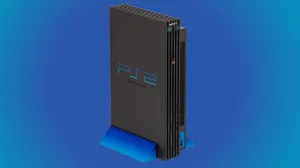When the Justice League of America first graced the pages of DC Comics in 1960, it was a decision that seemed both incredibly ambitious and a bit of a no-brainer. After the majority of DC’s superhero titles had been cancelled and reworked across the 1950s — with audience interest and changes in continuity fluctuating along the way — the publisher reimagined and modernized its idea of a superhero ensemble. It allowed new takes on its best and most beloved heroes to join forces in a single book, and forever impacted the world of mainstream comics in the process. Over six decades later, the spirit of that choice has echoed across Zack Snyder’s Justice League, the extended and fully realized film (which Snyder was unable to initially complete in 2017 due to a family tragedy) that makes its long-awaited debut on HBO Max this weekend. In many ways, the film sets out to make its own reimagined and modernized take on the superhero team — a take that an ever-growing movement of fans have wanted to see, even as audience interest and changes in continuity have also made their way across DC’s modern film universe. For some, it might seem like an impossible task to throw aside the theatrical “Whedon Cut” of the film, and the subsequent years of punchlines and online discourse, but the film creates a cinematic experience that makes it relatively easy to do so. While it isn’t without its flaws, Zack Snyder’s Justice League is complex, bold, and incredibly rewarding, in a way that uniquely captures the joy of the DC universe.
Videos by ComicBook.com
Picking up right where 2016’s Batman v Superman: Dawn of Justice left off, Zack Snyder’s Justice League sees Bruce Wayne/Batman (Ben Affleck) hoping to protect the world in the wake of the death of Clark Kent/Superman (Henry Cavill) by forming an alliance with an array of other heroes. As Diana Prince/Wonder Woman (Gal Gadot), Arthur Curry/Aquaman (Jason Momoa), Victor Stone/Cyborg (Ray Fisher), and Barry Allen/The Flash (Ezra Miller) each join the crusade — and deal with their complicated pasts and personal creeds along the way — the team is put to the test by the arrival of Steppenwolf (Ciarán Hinds), a powerful cosmic being hell-bent on conquering the world in hopes of winning back the respect of Darkseid (Ray Porter).
What immediately stands out in Zack Snyder’s Justice League — against the theatrical cut, as well as the broader landscape of superhero movies — is how comprehensive it feels. In terms of scope, the film covers swaths of the DC universe with a bombastic abandon, from larger-than-life cosmic struggles to mythical kingdoms of Earth to savvy street-level heroes and villains. Never once does that journey feel bloated or unrewarding, as it strengthens the story at hand, while also showcasing the awe-inspiring and genuinely cool elements that have made the DC universe endure for nearly a century. Much of that is thanks to the film’s four-hour run time, which will probably polarize some viewers, but is absolutely earned. No scene feels superfluous within the tapestry of the story, and even the choices made in the first 30-or-so minutes (which are arguably the slowest in the grand scheme of things) can still be justified from an artistic standpoint. The film’s chapter breaks are also very effective, allowing the narrative room to breathe while also embodying the spirit of a tried and true superhero comic event, which needs multiple issues to tell its massive narrative.
That being said, a superhero event is only as strong as the characters within it, and Zack Snyder’s Justice League takes its time to give each member of its ensemble a worthwhile and emotional outing. Snyder understands (more so than most creators) the mythmaking that inherently comes with the DC Comics universe — the sense that the legend behind a character’s mantle can inspire and influence far beyond themselves. That has been apparent throughout his superhero work, but it is on full display in Zack Snyder’s Justice League, as is an incredibly personal look at each characters’ individual backstory, and the ways that their grief and history help them become who they are. The tone of the film absolutely rises to meet that — there’s emotion and consequence where there needs to be, but there’s also a sense of levity, with moments of humor that extend far beyond degrading bickering or awkward one-liners. The tone isn’t quite the upbeat camp of Super Friends, or the stoicism of Snyder at his most serious, but something comfortably in the middle. If there’s a parallel to be drawn, it’s to Gardner Fox and Dennis O’Neil’s Silver Age Justice League of America stories, where each team member has a unique perspective, but also an infallible sense of respect and camaraderie for their fellow team members. That character work is easily one of the biggest pleasant surprises of the movie, as is the further exploration of Steppenwolf, who rises above most of the mustache-twirling tropes of comic book movie villains and poses a threat that is both compelling and terrifying. Even Darkseid, whose lines of dialogue can be counted on one hand, is characterized in a way that leaves a massive and lasting impact.
While there’s no telling if and when we’ll see this particular Justice League roster onscreen again, Zack Snyder‘s Justice League makes the absolute most of their time together — and the performances of the cast do as well. One of the biggest joys of the film is Affleck’s continued take on Batman, whose renewed sense of hope is both true to his character and charismatic in a way that only he could play. Gadot and Momoa are able to further cement their respective takes on Wonder Woman and Aquaman, retroactively adding meaningful layers to the struggles in their solo films that were released in the past few years. Miller’s take on The Flash condenses decades of different live-action and comic characterizations into an exuberant, heartfelt performance, one that leads to one of the coolest visual sequences of the entire film. Fisher’s performance brings humanity to some of the film’s darkest sequences, in a way that will surely give many fans a newfound appreciation for Cyborg. Cavill’s Superman — whose not-so-secret resurrection takes the film to another level — delivers an awe-inspiring take on the Man of Steel, which continues to cement his multifaceted and charming take on the character. The supporting cast that surrounds the League itself only makes the film even stronger, from Hinds and Porter’s commanding voice performances to a dozen or so significant cameos from the likes of Mera (Amber Heard), Deathstroke (Joe Manganiello), and Lois Lane (Amy Adams). Even if a viewer doesn’t like every aspect of every performance (one aspect of Mera in the film will baffle die-hard fans, and Jared Leto’s brief return as The Joker will absolutely kickstart a round of discourse), there’s still a sense of admiration and respect for what they bring to the table.
The technical “Snyderisms” of Man of Steel and Batman v Superman are on full display in Zack Snyder’s Justice League, but in ways that elevate the epic scope of the film itself, and warrant being seen on the biggest screen viewers have. Nowhere is this more apparent than with Fabian Wagner’s cinematography, which takes elements of the previous films’ brutalist visual aesthetic and refines them, allowing for colors like red, blue, and gold to strategically pop. Outside of one or two brief moments, the visual effects within that aesthetic are near-flawless, especially when it comes to Steppenwolf and Darkseid’s visual design. The sound mixing and sound design are a surprisingly key component as well, adding a visceral feeling to each otherworldly punch or shift in a plate of armor. And Junkie XL’s soundtrack, which has been an intriguing mystery for fans even before the Snyder Cut movement officially began, absolutely lives up to the hype, with musical cues that will hopefully become as popular as the franchise’s Superman and Wonder Woman themes.
From the second it was first confirmed to be a reality, it was clear that Zack Snyder’s Justice League was going to be unlike anything else in the comic book movie realm. By the time the credits roll on its four-hour run, that sentiment definitely holds true in ways that audiences couldn’t have even imagined. The film is an unabashed and cathartic labor of love — one towards Snyder’s daughter Autumn, one towards all of the fans who campaigned for it to see the light of day, one towards the kinds of compelling storytelling that the Justice League was initially founded on, and one towards the beautiful weirdness of the DC universe. At its core, it is also a well-executed, entertaining story about the power of human connection and inspiration, one that feels both timeless and timely despite being (mostly) conceptualized and filmed nearly half a decade ago. Yes, Zack Snyder’s Justice League has a handful of flaws, but they are largely outweighed by the sense of grandiosity and earnest spectacle on display — one that proves just what ensemble superhero movies can still be capable of.
Rating: 4.5 out of 5
Zack Snyder’s Justice League will premiere Thursday, March 18th, exclusively on HBO Max.








